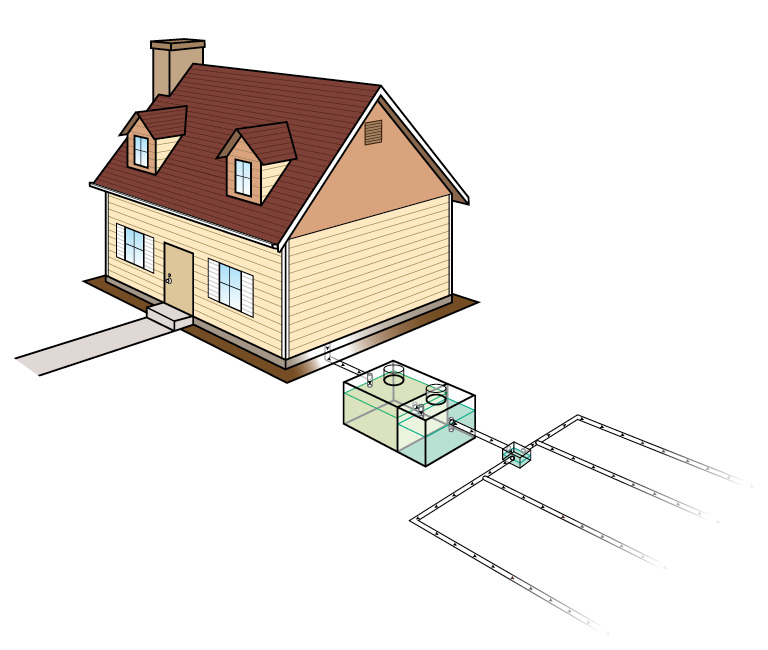Safe On Septic
You can have the hygiene and convenience of a food waste disposer in your kitchen when you are on a septic tank.
You can have the hygiene and convenience of a food waste disposer in your kitchen when you are on a septic tank.
You’ll find an InSinkErator food waste disposer in over 6 million American households with a septic tank.
InSinkErator Food waste disposers have always been safe for properly sized septic systems.
For example, if your system is sized for a dishwasher or clothes washer, it can handle a disposer. A disposer uses only about as much water per day as one flush of a toilet.
No fuss, no mess, no problem . . .
This video shows different food waste being ground, and how small the particals become once the food waste has gone through a food waste disposer.
Not true! Garbage disposals grind food scraps into a slurry that can easily be handled by your septic system.
Food scraps decompose faster than other waste sent into the tank, and because food scraps are 75% to 90% water, they add very little to the solids that settle at the bottom. Studies show that septic systems attached to a garbage disposal don’t require more frequent pumping than those that aren’t.

Food waste disposers use water to transport ground-up organic matter through internal plumbing and sewer pipes, and so food waste disposers are often perceived as water wasters.
Myths are perpetuated that they will hydraulically overload wastewater infrastructure, both centralized and decentralized, septic systems. To address these concerns, research was undertaken on quantifying the amount of water used by food waste disposers.
A review of ten studies found that the water use of food waste disposers is less than five (5) litres per household each day, which is around one flush of the toilet of water per day.
The use of food waste disposers does add organic material to wastewater and a septic system.
Research from ten states in the US specified that where food waste disposers are commonly used, the Total Suspended Solids increased by 20 grams per day.
Another finding from the research found high carbon-to-nutrient ratios indicate there may be a positive impact for enhanced biological phosphorus removal at wastewater treatment plants, which implies there may also be potential benefits of this high carbon ratio on nutrients discharged from septic tanks.
This means the food waste’s high carbon content could help remove nutrients like nitrogen and phosphorus when they discharge into drainage fields.

The SEPTIC1000 has two stage grind technology is perfect for a properly sized septic tank. SoundsealTM Plus, making it a very quiet food waste disposer.
Don’t worry about what you can and can’t grind… The SEPTIC1000 grinds nearly everything!


The SEPTIC2000 with it’s three-stage grind technology is perfect for use with a properly sized septic tank. SoundSealTM Plus makes it our quietest model.
Don’t worry about what you can and can’t grind…
The SEPTIC2000 grinds it all!